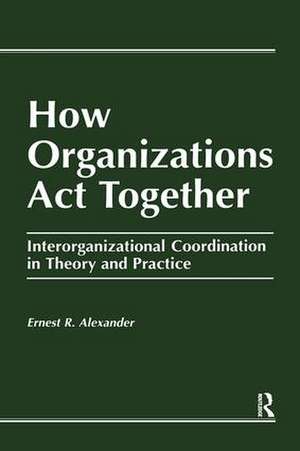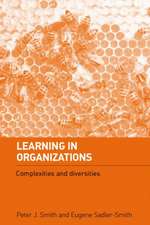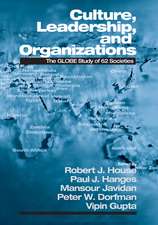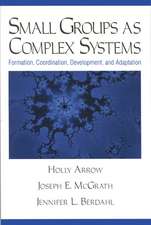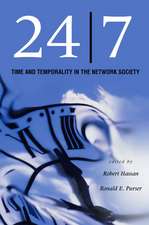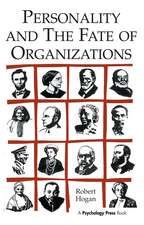How Organizations Act Together: Interorganizational Coordination in Theory and Practice
Autor E. Alexanderen Limba Engleză Hardback – 3 oct 1995
| Toate formatele și edițiile | Preț | Express |
|---|---|---|
| Paperback (1) | 616.79 lei 43-57 zile | |
| Taylor & Francis – 3 oct 1995 | 616.79 lei 43-57 zile | |
| Hardback (1) | 1007.36 lei 43-57 zile | |
| Taylor & Francis – 3 oct 1995 | 1007.36 lei 43-57 zile |
Preț: 1007.36 lei
Preț vechi: 1228.49 lei
-18% Nou
Puncte Express: 1511
Preț estimativ în valută:
192.78€ • 200.52$ • 159.15£
192.78€ • 200.52$ • 159.15£
Carte tipărită la comandă
Livrare economică 14-28 aprilie
Preluare comenzi: 021 569.72.76
Specificații
ISBN-13: 9782884491730
ISBN-10: 2884491732
Pagini: 408
Dimensiuni: 152 x 229 mm
Greutate: 0.66 kg
Ediția:1
Editura: Taylor & Francis
Colecția Routledge
Locul publicării:Oxford, United Kingdom
ISBN-10: 2884491732
Pagini: 408
Dimensiuni: 152 x 229 mm
Greutate: 0.66 kg
Ediția:1
Editura: Taylor & Francis
Colecția Routledge
Locul publicării:Oxford, United Kingdom
Recenzii
"Alexander's treatment of interorganizational coordination [IOC] will be a great contribution to those interested in learning how societal level partnerships can address issues which transcend the boundaries of the focal organization."
Cuprins
List of Figures and Tables, Preface, I Knowledge: Definitions, Theories and Research, II Practice: Interorganizational Coordination Structures — Design, Operation and Performance, III Synthesis: Theory and Practice, Appendix: Interorganizational Networks or Sets, References, Index
Descriere
This book offers a unique and comprehensive perspective on how modern organizations interact. Alexander unravels the complexities of interorganizational coordination, providing the tools for understanding.
